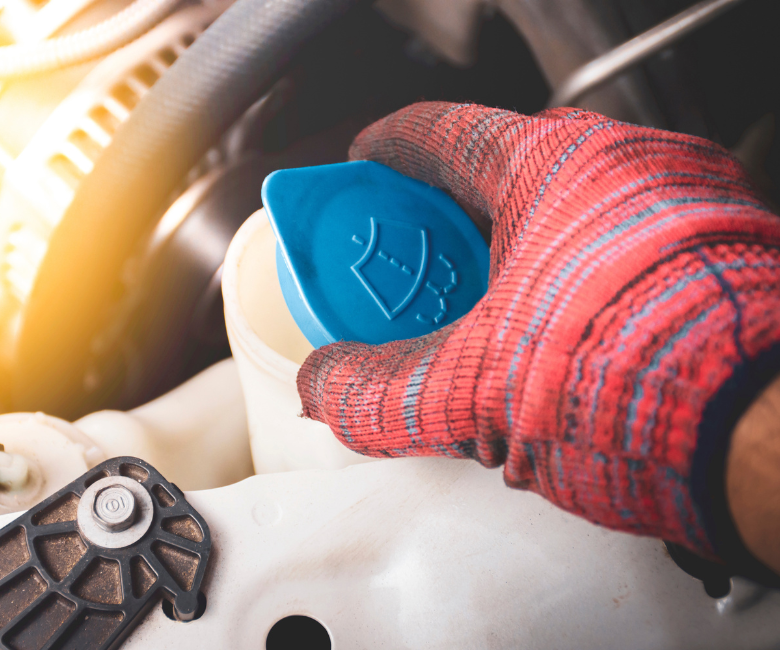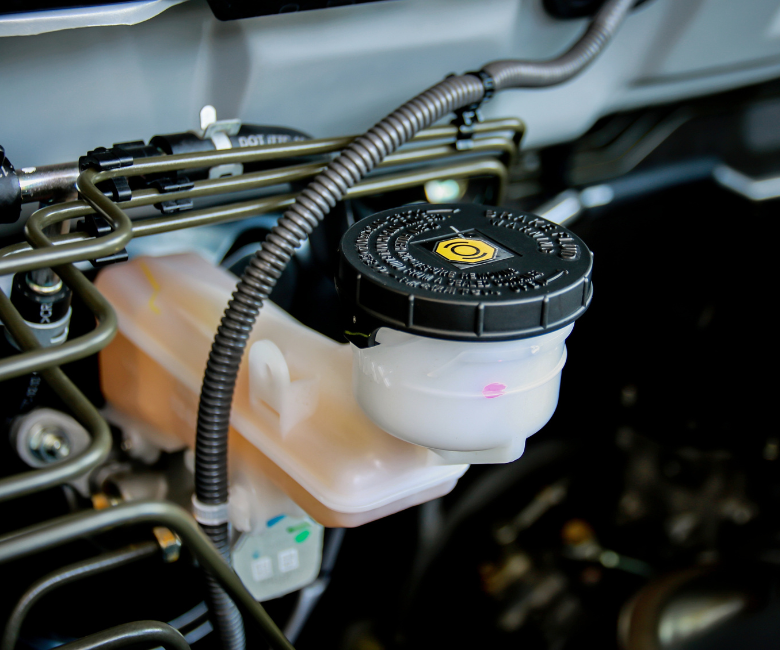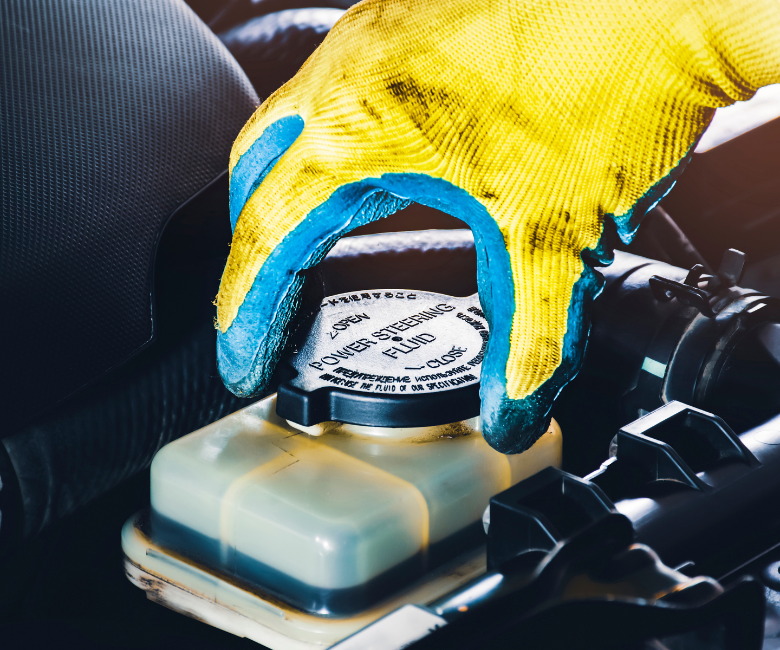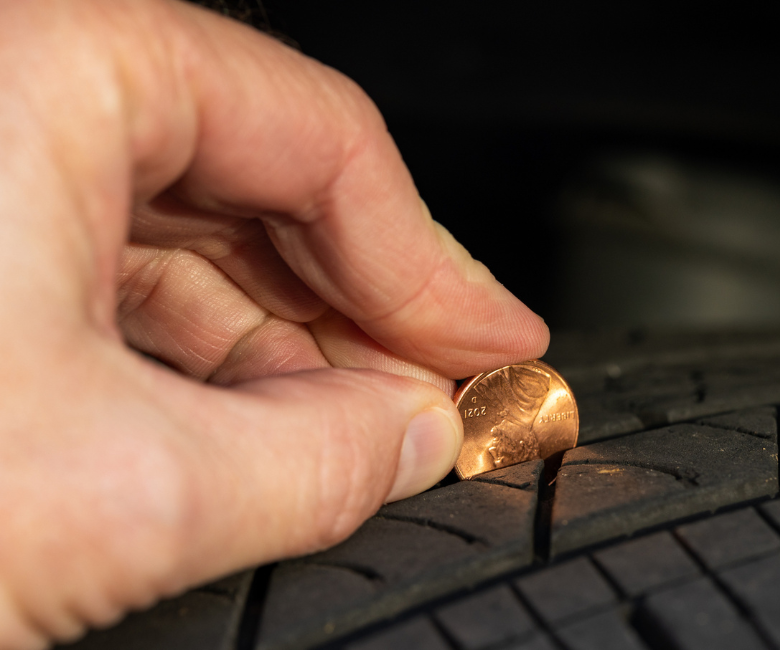
DIY Spring Car Maintenance Checklist: How To Care For Your Car After a Long Winter
- Vehicle Maintenance
- PEAK
- April 16, 2024
April is Car Care Awareness Month! The timing couldn't be more perfect to check on your car after a long winter. Follow along to learn some DIY car maintenance essentials for spring.
Spring is here, and it's time to sweep away winter's cobwebs and prepare your car for the road ahead. April is also National Car Care Month, so there's no better time to get started on your spring auto maintenance.
After dealing with rain, snow, sleet, and slush all winter, chances are your car could use a little extra care. This checklist covers car maintenance essentials for spring, explaining the steps involved with each task so you can DIY your way into some savings.
Inspect and Replace Your Wiper Blades
Wiper blades get a lot of work in the winter. By spring, they're often worn out and in need of a change. If your wipers leave streaks or film on your windshield, or if they squeak, chatter, or skip spots on your glass, it means your blades are worn out.
It’s also a good idea to visually inspect your wiper blades: if the blade frames are bent, or the rubber is frayed and worn, it's time to replace them.
Your vehicle might have hook-mount, pin-mount, or clip-on blades. In all three cases, you'll follow the same basic process to change your wiper blades:
1. Lift the wiper arm off the windshield at a perpendicular angle.
2. Locate the hook, pin, or clip-on mount attaching the wiper blade to the arm and release the locking mechanism.
3. Slide the used blade off the wiper arm.
4. Slide the new blade onto the arm and activate the locking mechanism to fasten it in place.
Before you begin, there are two important tips you should know about:
- Consult your owner's manual or take careful physical measurements to make sure you size your new blades correctly.
- The wiper arms on most newer vehicles can lock into place when you lift them to change blades. Even so, it's wise to cover your windshield with soft rags or towels to prevent windshield damage if the arm unexpectedly snaps back into position.
PEAK's lineup of heavy-duty wiper blades are specially engineered for high performance and long life. Our rust-resistant All Season blades deliver economical durability. You can also invest in our premium Silicone Platinum blades for elite performance across an extended lifespan.
Use the Vehicle Finder to find the right wiper blades for your car’s make and model, then get detailed installation instructions with these helpful DIY videos.


This is also an excellent time to top off your windshield wash. PEAK's All-In-One formula is an excellent all-purpose option. For extra power, try PEAK’s Bug Cleaner Windshield Wash, which cuts through airborne grime, tree sap, and all those insects that emerge in the springtime.
Check Your Fluids
Your spring auto maintenance to-do list should also include checks of your engine coolant, transmission, brake, and power steering fluids. Each of these fluids is contained in a dedicated reservoir within your engine. When in doubt on where to find them, check your car owner’s manual. That’s also where you can find guidance on which type of fluids to use in your vehicle.
Pro Tip: A funnel makes it simple to add fluids to your reservoirs without spilling. Just be sure to use a clean or dedicated funnel. Clean rags are also handy to clean off your dipsticks for an accurate reading.
Here's a quick primer on how to self-assess each of these fluids:
Engine Coolant
Make sure your engine is cold (hasn’t been running) and your car is parked on flat ground. Pop open your hood and locate the coolant reservoir, which is usually clearly labeled. You'll see markings for full (F) and low (L) on the side of the translucent tank.
If your coolant is near, at, or below the "L" line, it's time to top it off. Consult your car’s owners manual to determine what type of coolant you need, then slowly pour it into the reservoir with a funnel. PEAK has you covered with a complete lineup of high-performance coolants, including:
- Original Equipment Technology antifreeze and coolants, with special formulations for hybrid and plug-in vehicles
- All-vehicle PEAK antifreeze and coolant for any make or model
Transmission Fluid
If you have a sealed transmission, you'll have to enlist a technician's help to check the fluid levels. Otherwise, you can do a self-check using the built-in dipstick. Your owner's manual is the best source of information about your transmission if you have any doubts about fluid accessibility.
To get an accurate reading, your engine needs to be warm and running. After the engine has warmed up for several minutes, park on a flat surface and leave the car idling. Note: Some types of cars require the engine to be warm, but the car to be off. Consult your owner’s manual for specific instructions.
Pop the hood and locate the transmission dipstick, not to be confused with the engine-oil dipstick. The transmission dipstick is generally further back in the engine (closer to the windshield).
Remove the dipstick, wipe it off with a clean rag, then reinsert it completely. Draw it back out, and check the labeled side of the dipstick to see how high up the stick your fluid levels reached. Your dipstick may say “minimum” and “maximum,” or “cold” and “hot,” with the "hot" and “maximum” range indicating proper levels.
If you're in or close to "minimum" or "cold," you'll want to add some fluid. But first, do a visual inspection. Use your fingertips to take a fluid sample from the dipstick. Check the fluid's physical consistency: if it's grimy or gritty, it's time for a change. Ditto if it has a distinctive burned odor, or is very dark brown or black in color. In this case, a technician will be required to change your transmission fluid.
Before topping off your fluid, check your owners manual to be sure you have the correct fluid for your vehicle. To prevent overfilling, add a little fluid at a time, then recheck with a clean dipstick until you’ve reached the “maximum” or “hot” level.


Brake Fluid
With your car parked on a flat surface, and a cool engine, pop your hood and look on your engine's master brake cylinder for your brake fluid reservoir. The reservoir is usually positioned toward the rear of your engine on the driver’s side, where it connects directly to the brake pedal inside your car.
If you can't locate the reservoir, consult your owner’s manual. Once you find it, look for the indicator lines on the side that show minimum and maximum fluid levels. If your brake fluid is well below maximum levels, add more. Consult your owner's manual to make sure you choose an appropriate product for your make and model.


Power Steering Fluid
If you drive an electric vehicle (EV), you won't have to check your power steering fluid: EVs power their steering systems by drawing from the vehicle's battery and internal charging infrastructure. Some smaller, lighter, and newer gas-powered cars don't use power steering fluid, either. When in doubt, consult your owner’s manual.
If your car does use power steering fluid, start your check by locating the correct reservoir. Power steering fluid is stored in a small, transparent plastic container with a clearly labeled cap that’s generally black. You'll usually find it close to one of your front wheels.
Check your power steering fluid when the engine is warmed up, but turned off. If the reservoir is made of plastic, check the indicator levels on the side of the tank to see if your fluid is low. If the reservoir is metal or opaque, use the dipstick attached to the cap to check your levels.
You’ll also want to do a visual inspection of the fluid when you draw a sample. It should be translucent, with a pink or amber hue. If it's dark (brown or black), rubber residue is probably contaminating it. In this case, you'll need to have a technician flush and replace the fluid.
If the fluid looks okay, wipe the dipstick off with a clean rag and reinsert it completely. Then remove the dipstick again for an accurate reading. It will say “cold” and “hot,” “minimum” and “maximum,” or have lines for low, medium and high like your transmission fluid dipstick. Refill the reservoir little by little, rechecking with a clean dipstick until you reach the maximum level.


Spring Tire Care
If you use winter tires, now is the time to switch back to their all-season counterparts. Winter tires use special tread patterns and unique chemical compounds to give you more control over your vehicle in wintry conditions. If you use winter tires in warmer weather, they'll wear down faster and reduce your fuel efficiency.
Next, assess tread depth and pressure levels before you hit the road in your all-season tires. Here’s how:
Measure Tire Tread Depth
The "penny test" is an easy way to check your tread depth. Take the head side of a penny and stick it into your tire's grooved tread line with the head upside-down and facing you. Do you see all of Abraham Lincoln's head? If so, your treads are worn down too low and it's time for new tires.
Test Your Tire Pressure
Every vehicle has its own unique tire pressure specifications. You'll need to check your owner's manual for precise details, but most pressure specs fall in the range of 28–36 pounds per square inch (PSI).
Once you know the correct levels for your vehicle, check your tires with a pressure gauge. Remove the tire's valve cap, connect the pressure gauge to the valve stem, and take a reading. If your tire pressure is too high or low, adjust it accordingly. Correct high pressure by releasing air from the tires, and add more air if it's too low.
To release air, it's best to use a specially designed pin or deflating tool, which you can find at any auto store. Press the tool against the pin in the tire valve: air will hiss as it comes out. Stop releasing air periodically to recheck the pressure levels, and continue releasing air until you're in the correct pressure range. If you need to add air, you'll find air pumps at pretty much any service station. Fill slowly, checking the tire pressure as you go.
Assess Your Lighting
When it comes to seasonal car maintenance, lights are often overlooked since there isn't much to change from winter to summer and back again. That said, it's a good time to check all your headlights, brake lights, backup lights, turn signals and interior lights to make sure they're working correctly and you don’t have a burned-out bulb.
If you're looking to upgrade your headlights for better nighttime visibility, PEAK offers lots of options:
- Warm white Power Vision halogen headlights for deep down-road illumination
- Dependable, high-performance HID Xenon headlamps
- U.S. Department of Transportation-compliant Classic Vision halogen headlights
PEAK also features an extensive lineup of elite sealed beams, exterior lighting bulbs, and miniature interior lights.
Keep Your Ride in PEAK Condition
Seasonal upkeep is an important element of regular car maintenance. Winter can do a number on your vehicle, and timely spring auto maintenance is the key to avoiding costly surprises and mechanical breakdowns.
Explore our DIY Hub to learn more about car maintenance essentials, and trust PEAK products to keep your car running strong no matter what the elements throw at you.
Download this printable Spring Car Maintenance Checklist that you can take to your garage.

